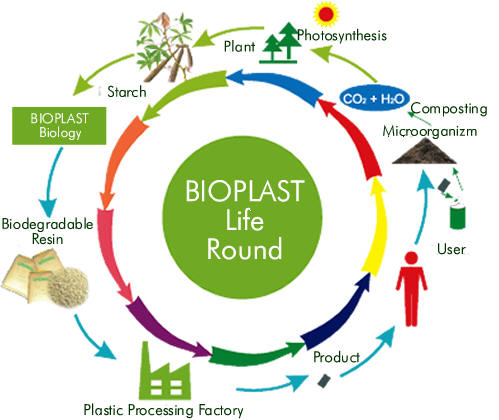![]()
![]()
COMPOSTABILITY
Compostable Plastic is plastic which is "capable of undergoing biological decomposition in a compost site as part of an available program, such that the plastic is not visually distinguishable and breaks down to carbon dioxide, water, inorganic compounds, and biomass, at a rate consistent with known compostable materials (e.g. cellulose). and leaves no toxic residue."
Composting is the transformation of organic waste into compost. A pile of organic waste attracts micro-organisms normally present in the environment. If the water content is sufficiently high, the micro-organisms start to consume the nutritional substances. This degrades the organic molecules, produces carbon dioxide, water and heat (biodegradation). At the end of the process, the initial waste is transformed into a substance called compost. In the composting plants, this process is controlled and optimized in order to achieve high conversion rates, control the effluent and control the quality of the final compost.
The
compostable fraction of M.S.W. (Municipal Solid Waste), such as kitchen
scraps, grass cuttings, wastes from canteens, restaurants, etc., contains
a lot of water and decomposes quickly. Consequently, they are not suitable
as for recovering energy by incineration, because the heat is lost in the
evaporating water instead of producing electricity.
Furthermore, in landfill, the wet organic materials are the source of
considerable environmental problems, as the production of methane and
possible contamination of the water tables with contaminated percolates.
In contrast, treatment of the organic part of solid urban waste (also
known as the "wet part") by composting has extremely positive aspects. The
production of compost and its use in agriculture completes the
environmental cycle. The organic material returns to its place of origin
in the form of compost, that is, a substance that maintains fertility,
prevents erosion of the soil, reduces the washing away of inorganic
fertilizers and blocks the onset of micro-organisms that are pathogenic to
plants, just to mention some of the positive aspects found with the use of
compost.


Composting is currently applied to selected waste, which contains only biodegradable organic material. Traditional plastics are banned from composting because they resist degradation and cause contamination. In contrast, biodegradable plastics are allowed, but only if they satisfy criteria established by norms that define compostable materials. In the absence of rules, definitions and test methods non-compatible materials were composted in the past. This caused a lot of harm, especially to the trust of users and of the technicians responsible for the composting plants. Today, because of European Standard EN 13432 this is no longer possible.
